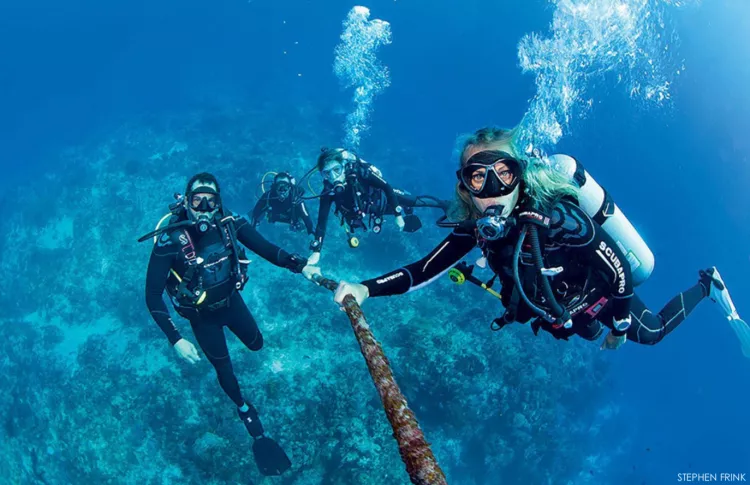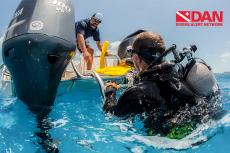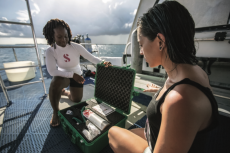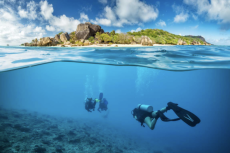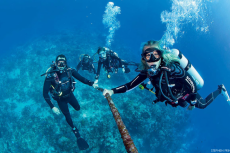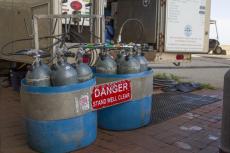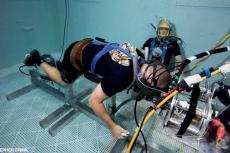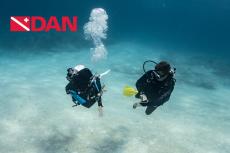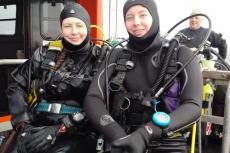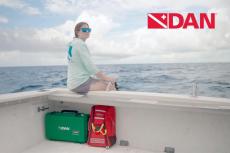Hypothermia & Diving
Cold can mean a lot of things—a too-thin wetsuit on a tropical dive, a 200g undergarment when a 400g would have been more appropriate or a flooded drysuit under a layer of ice on an Arctic expedition. No matter what your idea of cold is, it is important to understand exactly when discomfort meets danger.
Diving on a blistery morning can be fun, but shivering your way through an hour of decompression can put you on a fast track to the local chamber. It is up to you to make sure that you are adequately prepared for your dive, and for the aftermath. It is easy to end up cold on a dive through no fault of your own, but knowing the signs and symptoms of hypothermia before you dive will help you know when you might be pushing things just a little too far.
What is hypothermia?
You have likely had exposure to the concept of hypothermia in some of your certification courses, if not your diving. The condition is the result of a drop in core body temperature. It can happen in the Arctic or in the tropics, anywhere that your body is exposed for a length of time to a temperature low enough to sap the heat from your core. That time of exposure will be much longer in warmer water than in a frozen lake, but both situations can make for a hypothermic diver.
As a baseline, a typical adult maintains a core temperature of about 97.6 to 99.6°F. About half of women will run slightly cooler, but it is a useful universal approximation. As a diver’s core temperature drops below 95°F, hypothermia will begin to set in, and the body will begin to lose function.
To keep the core warm, the diver’s body will begin to shunt blood to her core, causing initial symptoms that typically include shivering, dizziness, nausea and feelings of hunger. If that core temperature continues dropping, most individuals will stop shivering at about 86°F and their pupils will dilate. At 82°F, their muscles will become rigid, and the risk of serious cardiac complications becomes considerable.
These symptoms worsen as core temperature continues to drop, so it is vital that individuals suffering from hypothermia be identified and brought to qualified medical care as rapidly as possible. Once significant symptoms of hypothermia have begun to present, the risk of medical complications becomes significantly greater and treatment requires more than gently re-warming.
Note that many individuals suffering from hypothermia will not recognize their symptoms until they are pointed out, and the confusion caused by the condition can result in impaired decision-making and lapses in judgement.
Cases like this are more common in mountaineering incidents, where climbers suffer from “paradoxical undressing” and shed their clothing in extreme arctic temperatures due to a perceived (and incorrect) sensation of heat, often resulting in injury or death.
Plan your dive, dive your plan
Hypothermia can be serious, but it is something that experienced divers can prevent in almost all situations. Plan ahead for your dive with appropriate and conservative exposure protection, heat sources (in-water or on the surface for after the dive), and a well-thought-out emergency plan for if a drysuit floods, a dive goes longer than expected or a diver begins to show symptoms of hypothermia.
Bringing hot water to make a warm drink (or fill your wetsuit between dives) is one way to keep yourself comfortable and warm on a day where there is more snow than sun in the forecast.
If you or your buddy begins shivering before or during a dive, terminate your dive as quickly as reasonably possible. The exception to this advice is in situations with significant decompression obligations—hypothermia can markedly increase your decompression stress, and a balance may have to be struck between cold and added conservatism in decompression planning.
In situations like these, light exercise at your stop to keep blood flowing and your extremities warm may be your best bet.
For more information on hypothermia and diving, visit DAN.org/Health
DECOMPRESSION STRESS
Decompression stress is a somewhat ambiguous term because it can mean so many things. The number of factors that can affect your risk of DCS as a diver are innumerable, and decompression stress is one way we discuss and manage those factors as a group.
Your thermal status is one of those factors, but you do not have to be hypothermic to increase your risk. Know the three most common causes of decompression stress and keep yourself safe this season:
Exercise
The timing and intensity of exercise during or around the time of your dive can make a great deal of impact on your decompression safety. Studies have shown that light to moderate exercise before a dive, and during the ascent and decompression portions of a dive, can decrease your risk. The same is not true for vigorous exercise or exercise done on the bottom.
Exercise done during the bottom portion of your dive can increase inert gas uptake, and very vigorous exercise performed during the ascent or following a dive can promote bubble formation and contribute to an injury. Work out the night before a dive, but not after, and remember to minimize the amount of work you do at depth during your deep dives to minimize your decompression stress.
Dive profile
The profile of your dive is one of the most critical factors in your risk of a decompression injury. Excellent planning and management of all your other decompression factors can be thrown to the wind in the face of an inappropriately long dive with inadequate stops or a dive planned with an algorithm lacking appropriate conservatism.
Appropriate conservatism is both a personal choice and dependent upon your other decompression factors, but remember that you can manage the aggressiveness of your decompression profile with almost any of the common modern algorithms. Adding time to your shallowest stops is a reasonable way to minimize your risk of bubble formation.
Thermal status
We have already discussed hypothermia and diving, but what about heated undergarments? They are becoming increasingly common, but used incorrectly, they may pose a hazard to diver safety.
A US Navy study from 2007 (and several more recent but unconfirmed studies) indicated that dives that started cold and ended warm were significantly less likely to contribute to a decompression injury than dives that were warm throughout or warm to start and cold to finish.
Warm and cold are subjective terms used by the study, but it can be reasonably recommended that divers with heated undergarments leave them off until the ascent portion of their dive to minimize their gas uptake but maximize gas elimination.
These divers should avoid high-intensity exercise during decompression, as their heating systems are already promoting gas elimination—the goal here is to aim for a warm core temperature with mild exercise while decompressing.
- Log in to post comments



